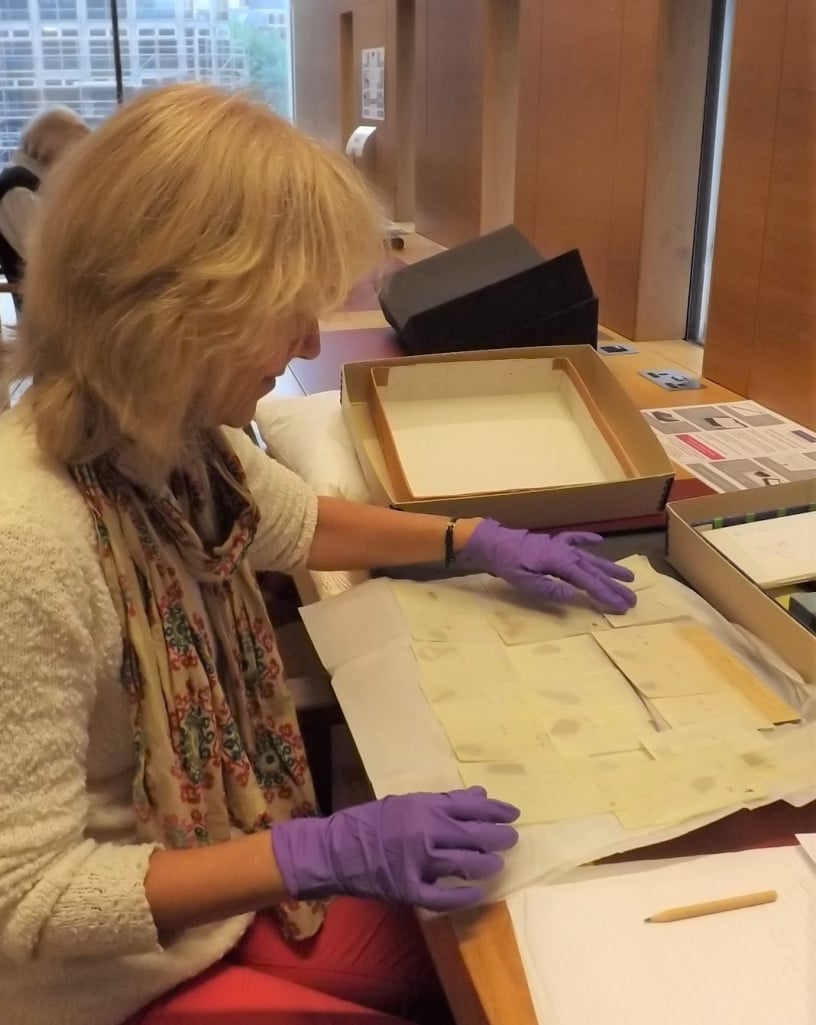
Researchers at the University of Manchester have discovered hidden messages on what were believed to be blank fragments of the famed Dead Sea Scrolls. Only by peering at the ancient leather artifacts through a magnifying glass did the faint traces of Hebrew lettering appear.
“Frankly, since all these fragments were supposed to be blank and had even been cut into for leather studies, I also thought I might be imagining things,” admitted Joan Taylor, the King’s College London professor who first spotted the invisible text, in a statement from the Network for the Study of Dispersed Qumran Cave Artefacts and Archival Sources. “But then it seemed maybe other fragments could have very faded letters too.”
Taylor was examining the fragments at the university’s John Rylands Library in collaboration with Marcello Fidanzio of the Faculty of Theology of Lugano, and Dennis Mizzi of the University of Malta as part of a study funded by the Leverhulme Trust.
In the 1950s, the 51 fragments, which were excavated from the Qumran caves, were gifted by the Jordanian government to Ronald Reed, a leather expert at the University of Leeds. Presumably blank, they were considered all but worthless, and ideal for chemical testing and other scientific analysis.
The hidden text on one of the University of Manchester’s Dead Sea Scroll fragments as revealed through manification on the left and multispectral imaging on the right. Photo courtesy of the University of Manchester.
Luckily, Reed only shaved off a few millimeters of the material to complete his work, leaving the artifacts largely intact. The University of Manchester received the Reed Collection as a donation in 1997, including the fragments, which had languished in storage for decades.
After examining them under the magnifying glass, the researchers took multispectral imaging photographs of both sides of all the fragments and found that four of them featured readable Hebrew/Aramaic text. Some of the other pieces also showed traces of letter formations.
The most substantial fragment is believed to feature biblical text from Ezekiel (46:1–3), with the word Shabbat, or Sabbath, clearly legible. It contains 15 or 16 letters arranged in four lines. Another piece contains sewn thread, and appears to be from the edge of a parchment scroll.
The find contrasts with a cache of 70 supposed Dead Sea Scroll fragments that came on the market after 2002. Those artifacts now appear to be forgeries; a high-profile group of them ended up in the collection of the Museum of the Bible in Washington, DC, and were recently revealed to be fakes thanks to a battery of scientific tests.
Meanwhile, Manchester’s “properly-excavated, less sensational… turned out to be the real treasures,” University of Iowa classics and religious studies associate professor Robert Cargill, who wasn’t involved in the study, told Smithsonian Magazine. “Unlike the repeated scandals being reported at the Museum of the Bible, this discovery within the collection of the John Rylands Library is a reassuring success story about the use of new technological approaches in archaeology.”
The discovery makes the University of Manchester the only UK institution to own authenticated textual fragments of the 2,000-year-old Dead Sea Scrolls. Shepherds found caches of 1,000 ancient Hebrew manuscripts in the Qumran caves, in the desert north of the Dead Sea, in 1946. The research team will publish more information about the previously unknown texts in a forthcoming report.